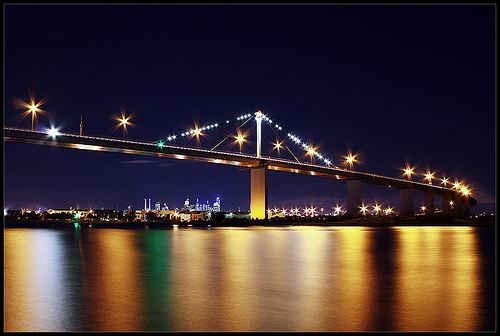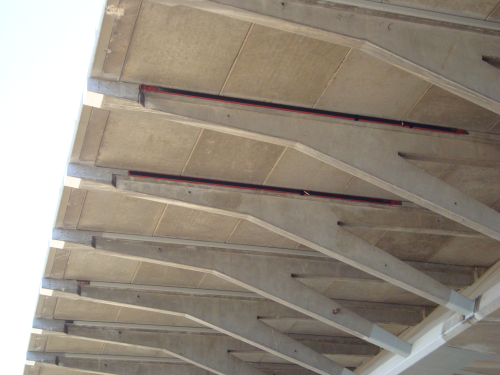

The West Gate Bridge crosses the Yarra River and is part of the 35 km M1 Freeway that traverses the city of Melbourne. It is a 2.5 km long suspension bridge (approximately 6 km long including approach roads), with a 336 m main river span, 58 m high above the water, with its two towers culminating at 102 m above river level. The current traffic volume across the bridge of 160 000 vehicles per day includes 20 000 trucks.
The strengthening renovation of the bridge includes expanding the bridge from four to five lanes and installing a public safety barrier.
The strengthening work started in October 2009 on the east side of the bridge, using MBrace® carbon fibre plates and fabrics supplied by EPSILON Composite, France, and epoxy resins supplied by BASF, Australia. The MBrace plates (up to 4 mm) have a peel ply on both sides.
The original design required more than 100 km of high strength standard carbon fibre plates, more than 10 000 m² of carbon fibre fabric, including more than 65 tons of adhesive and more than 20 tons of resin. According to EPSILON Composite, this makes it by far the largest carbon composite strengthening project ever, by a factor of at least three compared to previous jobs.
The project is being funded by the Victorian State Government and the Australian Federal Government to the value of $240 million. A consortium known as the West Gate Bridge Strengthening Alliance was formed in 2008 including: Vic Roads, the local highway authority, John Holland as a construction partner, Flint and Neill Partnership, a UK design specialist, and local design and engineering firm, Sinclair Knight Merz.




